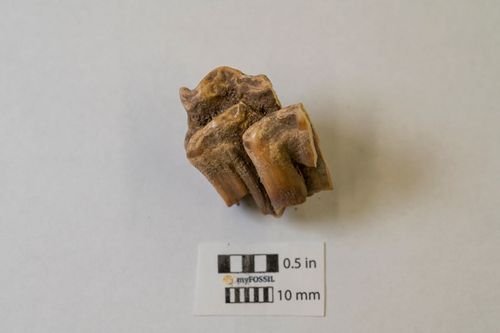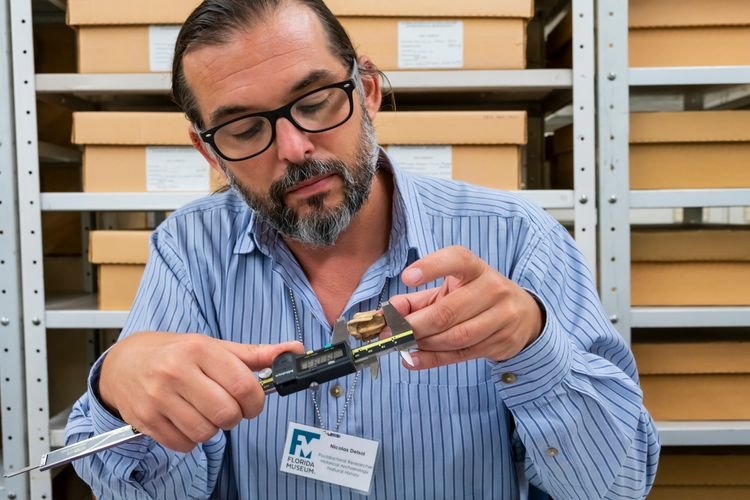A recent discovery is expanding our knowledge of the history of early North America, following the recovery and DNA sequencing of a fossil recognized as the oldest evidence of horse domestication ever found on the continent.
Recent work by postdoctoral researcher Nicolas Delsol from the Florida Museum of Natural History, who sequenced the fossil’s DNA, has revealed something fascinating: that this specimen’s closest relatives were feral horses that lived more than 1,000 miles away on a deserted island.
Background: Finding A Horse Tooth
At the time of the discovery, Delsol had actually been searching for fossil remains of an entirely different animal.
“My research was initially focusing on the introduction of cows into the Americas,” Delsol recently explained in an interview with the Debrief. “Cows (like horses) did not exist in the Americas prior to the arrival of the Europeans. So, my work was focusing on analyzing the origins of these animals in Europe through the analysis of ancient DNA.”
Examining cow fossils, Delsol found a bone fragment that looked different than the rest. “This horse tooth, actually a small fragment of a molar, was misidentified earlier as a cow and got into some samples I was studying,” Delsol said. “My first impression when I received the genetic sequences was that something was not right with this sample.”


Trying to figure out what the fossil could be, Delsol had a hunch that it might have belonged to an ancient horse. According to Delsol, “The only large mammals present on Hispaniola at that time (the 16th century) were horses. So, I compared this sequence to a horse genome and I got a match!” With the successful DNA sequencing, Delsol made an important discovery: this specimen represented the oldest DNA sample collected from a domesticated horse ever found in the Americas.
Analysis: Marooning a Domesticated Horse
Thanks to this new discovery, Delsol and others were able to uncover more about how the first horses arrived in the Americas and how they became domesticated.
“These animals, which again did not exist prior to the European invasion, played a crucial role in the daily lives of settlers, but also profoundly altered the lifestyles of the Native communities,” Delsol explains. Horses helped give the European invaders, particularly the Spanish, an advantage in conquering the indigenous tribes of the Americas.
It was this colonial quest that Delsol and others believe first introduced the horse, noting that the finding “supports the hypothesis, based on historical accounts, that the horses that were introduced to the Caribbean originally came from the Iberian Penninsula.” However, Delsol’s discovery suggests something even more: that the horse in question is related to feral horses that had been marooned on an island 1000 miles away off the Virginia and Maryland coasts.
“This horse relates closely to the feral population of Chincoteague ponies in Virginia,” Delsol told The Debrief. “Folk stories on this breed state that they descend from a few horses that escaped the shipwreck of a Spanish galleon.”
Outlook: Science vs Folklore
While existing folklore could provide one explanation for the arrival of domesticated horses, Delsol doesn’t think the current evidence necessarily supports that narrative. “The local lure on the ponies that escaped a shipwreck (that was popularized in the children’s novel Misty of Chincoteague) is a cute story, but as scientists, we cannot simply state that a local legend is true or not.”
For his own part, Delsol has his own unique theory about the introduction of domestic horses in the Americas.
“The Spaniards could have left these horses on the island for breeding purposes, expecting to come back at some point,” Delsol says. “It was a common practice, among some European explorers, to leave some animals (like pigs or cows) on islands so they would multiply and could constitute local stocks that could be used afterward.”
As the search for additional fossil remains continues, additional findings may help to further corroborate Delsol’s theories, in addition to helping reveal how much of the surrounding folklore is indeed factual.
“Maybe this story is rooted in some actual events,” Delsol contends, “which our findings seem to suggest, but it might have happened differently.”
Kenna Hughes-Castleberry is a staff writer at the Debrief and the Science Communicator at JILA (a partnership between the University of Colorado Boulder and NIST). Her writing beats include deep tech, the metaverse, and quantum technology. You can find more of her work at her website: https://kennacastleberry.com/

